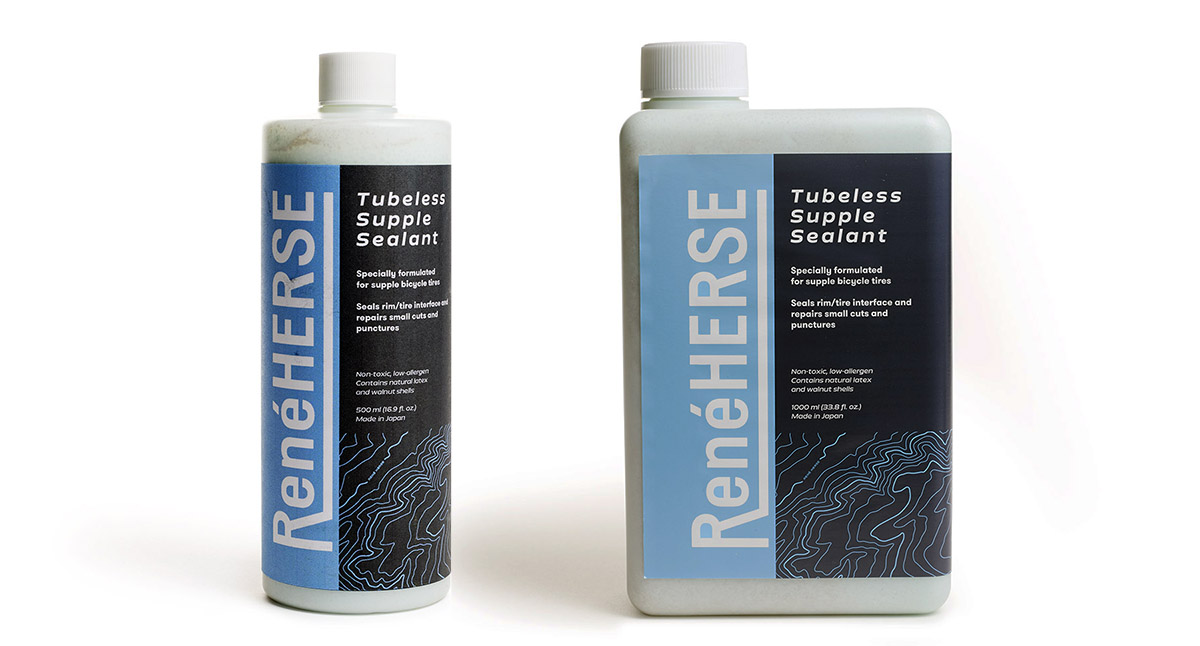Introducing Supple Sealant
At Rene Herse Cycles, we’ve been running some of our bikes tubeless for more than a decade. Back then, neither rims nor tires were tubeless-ready yet, so there was much improvisation. On rough terrain, the tires tended to burp, and there were other issues, too. It was all part of the learning process, and things improved quickly. We introduced our first tubeless-compatible tires in 2016. However, we’ve never abandoned tubes, either. We figure that there is a place for each, depending on how and where you ride.
Tubeless has come a long way since those early days. Quality tubeless-ready rims today offer excellent tire fit. Tubeless-compatible tires make the setup much easier, with special materials and beads shaped with a lip that keeps the sealant inside.
Tubeless sealants have improved, too. Rather than just being a latex solution, the best sealants now include solids that help plug small gaps between tire bead and rim, as well as the sometimes slightly porous casings of ultra-supple tires. However, those solids can clog valve stems, making the sealant hard to inject into the tire. The alternative, to pour sealant into the tire before mounting it, makes tubeless installation a lot more challenging (and often messy).
That’s why we’ve developed Rene Herse Supple Sealant, specially formulated for supple tires. It contains ground walnut shells that help seal the tire against the rim, and also interlock to plug cuts in the tire more effectively. The sealant is filtered to remove large particles that can clog injectors and valve stems. That makes tubeless installation so much easier. The new sealant is made from natural ingredients: water, natural latex, walnut shells, and some additives that help keep the ingredients in suspension. It is 100% biodegradable and poses no meaningful environmental harm if it’s spilled accidentally on road or trail. Rene Herse Supple Sealant is now in stock in a convenient 500 ml and an economical 1000 ml bottle.
Click here for more information or to order.
A few tips for tubeless setups:
- Shake the sealant for 60 seconds—that’s a long time!—before injecting it. You want the latex and solids to be suspended, otherwise, you are mostly injecting water.
- When you are setting up supple tires tubeless, before adding sealant, inflate the tire to the max. pressure of rim or tire (whichever is lower). Let it sit for a while. That pushes the bead firmly against the rim and avoids tiny gaps that can otherwise occur with supple tires.
- Make sure you are working sealant into every part of the tire/rim interface. Simply injecting sealant and going for a ride is usually not enough, especially with supple tires.
- Check at least once a month whether there is still enough liquid sealant inside your tires. You can use a ‘dip stick’ to check the sealant level through the valve stem, just like you check the oil level in a car.
- If your sealant has dried out, add more.
- If your sealant is getting too thick because it’s starting to dry out, you can dilute it with water.



